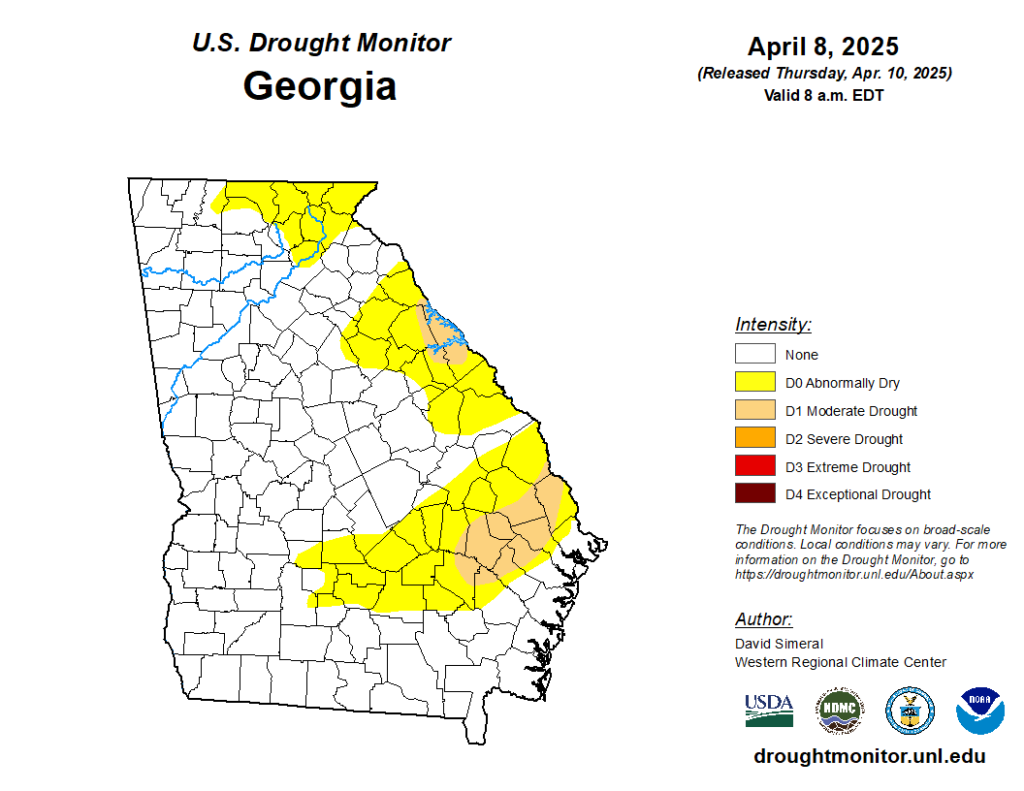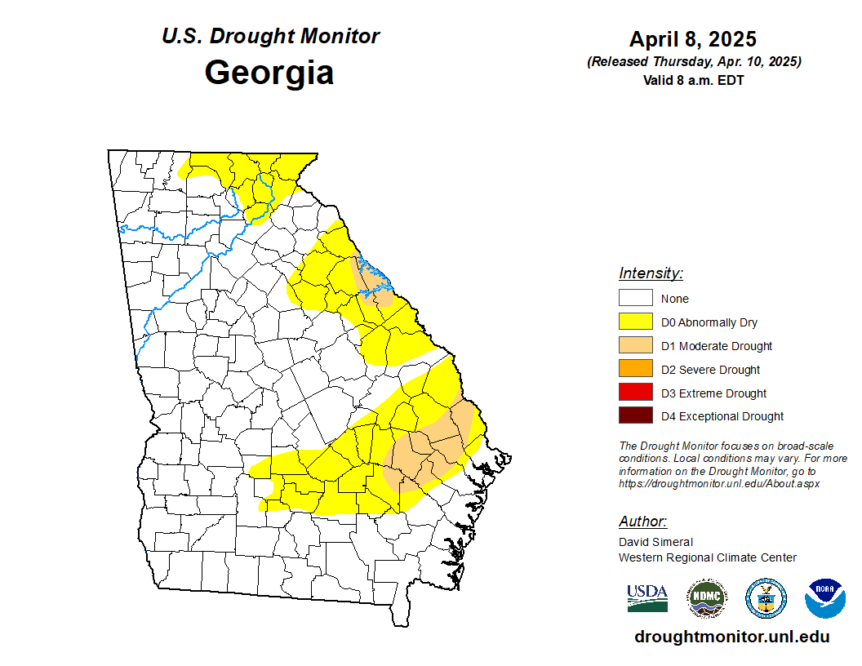
By Clint Thompson
Last week’s increased rainfall helped improve the drought conditions across Georgia, according to the latest release of the U.S. Drought Monitor. However, last Monday’s deluge may be the last substantial rainfall for the state over the next couple of weeks.
Pam Knox, University of Georgia Extension agricultural climatologist, highlights what precipitation is expected in the foreseeable future.

“Definitely the southern half of Georgia, especially, is going to get very little rain in the next week. There is some chance the week after that but it’s still probably not as much as the farmers there would like. Everything is growing like crazy. They need all the water they can get. The northern half of the state is going to get a little more,” Knox said.
“I think the temperatures (this) week are not going to be as hot as they were, and I don’t even know that we’re necessarily going to get in the upper 80s or close to 90. I think we’ll probably see more of 70s to the low 80s depending on where you are in the state. Even then, that’s enough that the plants are going to want to use all of the water that’s available to them. If we don’t get much rain and there’s not a lot of reserves in the ground, there will be some water stress.”
According to weather.com, the most rain forecasted for Tifton, Georgia, over the next two weeks is 24% on April 23.
Neutral Conditions
The weather system has shifted out of La Nina and back to neutral conditions. Knox discussed the ramifications of that weather shift.
“It doesn’t have a lot of short-term impact on what we see. What we’ve been seeing is a pattern that’s consistent with a weak La Nina. We have crossed that border back into neutral, but those conditions are still out in the ocean. We’re not going to see an immediate flip to something else,” Knox said. “What we know from climatology is when we have neutral conditions, short-term patterns like where fronts go become more important. This time of year, we don’t necessarily get a lot of fronts coming through especially in South Georgia.”
The remaining drought in Georgia is concentrated to the eastern side of the state, as far south as Coffee, Bacon and Appling counties and stretching northward to Habersham, Towns and Rabun counties.










